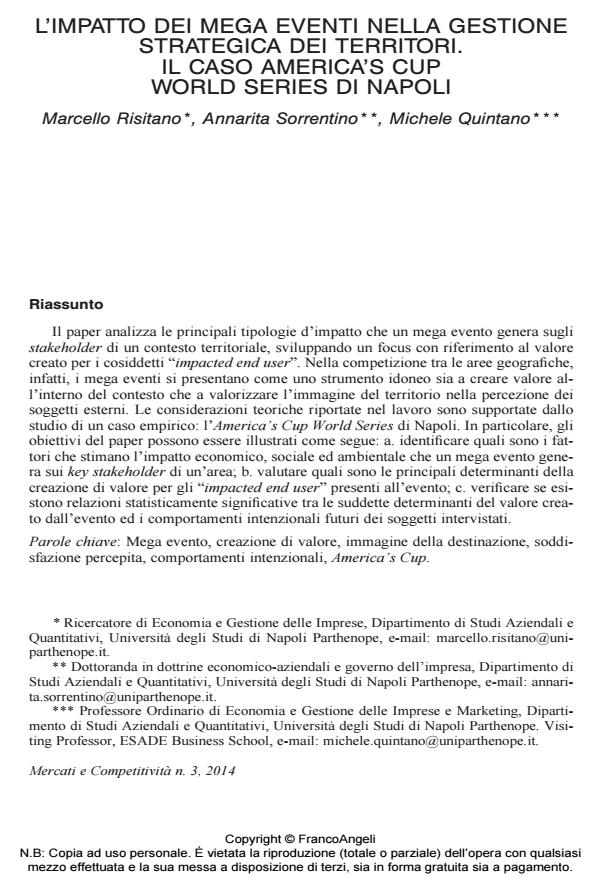The impact of mega event in place management strategies. The case of America’s Cup World Series in Naples
Journal title MERCATI E COMPETITIVITÀ
Author/s Marcello Risitano, Annarita Sorrentino, Michele Quintano
Publishing Year 2014 Issue 2014/3
Language Italian Pages 28 P. 113-140 File size 195 KB
DOI 10.3280/MC2014-003007
DOI is like a bar code for intellectual property: to have more infomation
click here
Below, you can see the article first page
If you want to buy this article in PDF format, you can do it, following the instructions to buy download credits

FrancoAngeli is member of Publishers International Linking Association, Inc (PILA), a not-for-profit association which run the CrossRef service enabling links to and from online scholarly content.
This paper analyzes some impact factors of a mega event from a place marketing perspective, with particular reference to the monitoring of the value created for the socalled "impacted end user". In the competition among destinations, mega events are considered as a tool to create value for the host destination and to improve the place image in the customer perceptions. The theoretical considerations described in this paper are supported by case study based the America’s Cup World Series took place at Naples. In particular, the aims of the paper can be illustrated as follows: a. identify the main factors related to the economic, social and environmental impacts of a mega event for the key stakeholders; b. evaluate the determinants of value creation for the "impacted end users"; c. verify if exist any significant relationships between the aforesaid determinants of the value creation and user intentional behaviors.
Keywords: Mega event, value creation, destination image, satisfaction, intentional behavior, America’s Cup.
Marcello Risitano, Annarita Sorrentino, Michele Quintano, L’impatto dei mega eventi nella gestione strategica dei territori. Il caso America’s Cup World Series di Napoli in "MERCATI E COMPETITIVITÀ" 3/2014, pp 113-140, DOI: 10.3280/MC2014-003007